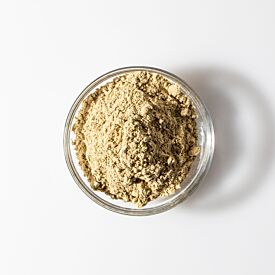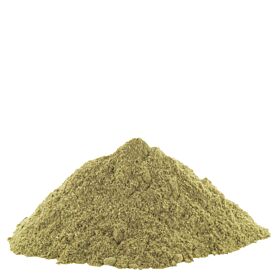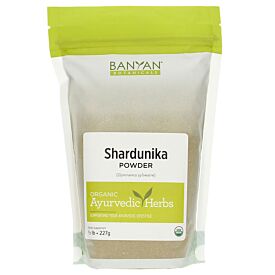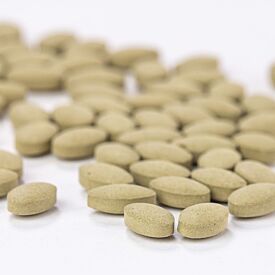Healthy Sugar Metabolism
A 38-year-old female comes to see you because of fatigue and trouble sleeping at night. On taking a further history, you find out that she is waking 2–3 times at night to urinate, and this is not allowing her to get restful sleep. She also reports constantly feeling thirsty throughout the day. She is a real estate agent working long hours, so she spends a lot of time in her car, and often gets fast food meals on the run. On examination, you find her to be a pitta-kapha individual, overweight, with no other significant findings. Her family history includes a father with diabetes and a mother with arthritis. Which of the following recommendations would you be least likely to give at this time?
- A brisk 30 minute walk at least 4–5 times a week
- Counseling on kapha pacifying lunch items that she could carry with her in the car
- Drink less water so she doesn’t have to wake up to urinate
- Kapalabhati Pranayama
- Add 1 teaspoon of turmeric to her diet daily
Answer: C
Explanation: In addition to sending her to a primary care physician to get baseline labs, including a check for diabetes, recommendations A, B, D, and E can help rejuvenate the body’s normal healthy sugar metabolism.
Normal Glucose Metabolism
The word sugar gets a bad rap these days. Of course, it is more in reference to processed sugar, unnatural or unhealthy alternative sweeteners, and our society’s excessive indulgence in the sweet taste. Nonetheless, mention the word sugar, and the word "evil" seems to just follow.
It is important to remember that the body uses sugar, in the form of glucose, as a key source of energy, and particularly for certain tissues such as the brain. While there can be multiple nutritional sources for the body’s glucose, what we want to focus on in this article is the body’s optimal ability to process and use the glucose.
The current understanding of normal physiology identifies several hormones involved in glucose metabolism in the body. The American Diabetes Association has an excellent article summarizing this process; a brief summary of the article1 is presented here.
The body is designed to keep glucose in the bloodstream at a tightly regulated concentration, both through the release of glucose and the usage/removal of glucose as needed. Glucose as a fuel for the body comes from three main sources: (a.) absorption through the intestines from nutritional sources, (b.) glycogenolysis, or the breakdown of glycogen by the liver to release glucose, and (c.) gluconeogenesis, or the production of glucose in the liver (and rarely in the kidneys during extreme starvation). Glucose is removed from the bloodstream by usage (largely by the skeletal muscles and fat tissue) and by storage (particularly in the liver).
The body has an intricate system of hormones that help regulate this glucose concentration, and it is possible that we don’t yet know all the hormones involved. These regulatory hormones include insulin, glucagon, amylin, GLP-1 (glucagon like peptide-1), GIP (glucose-dependent insulinotripic peptide), epinephrine (adrenaline), cortisol, and growth hormone. Insulin and amylin are produced in the beta-cells (B-cells) of the pancreas, glucagon is produced in the alpha-cells (A-cells) of the pancreas, and GLP-1 and GIP are from the cells in the intestines. Epinephrine and cortisol are produced by the adrenal glands, largely in response to stressful emotions;2 and growth hormone comes from the pituitary gland2 causing insulin resistance, though its role is a bit more complicated and will not be discussed further here.3
Insulin and amylin are the two hormones that cause glucose levels to reduce in the bloodstream, by having cells uptake glucose for use and storage, and by reducing the production/release of new glucose from the liver. Insulin works in three major ways: signaling peripheral tissues to uptake glucose; telling the liver to take in glucose and store as glycogen (glycogenesis); and inhibiting glucagon release from the pancreas, thereby stopping the liver from producing more glucose (from glycogenolysis and gluconeogenesis). Amylin also decreases glucagon (so new glucose is not added to the bloodstream), slows the rate at which food empties from your stomach to small intestine (so that glucose absorption is delayed), and makes the brain feel full and satisfied.2
GLP-1 and GIP help with similar functions to insulin and amylin. Food entering the gut signals the release of GLP-1 and GIP, which in turn push the pancreas to increase insulin and decrease glucagon, all resulting in reduced glucose in the bloodstream. GLP-1 also works like amylin, slowing the gastric emptying of food and making the brain feel full.2
Finally, glucagon is the key hormone involved in increasing the glucose in the bloodstream, largely by stimulating the liver to break down glycogen stores and/or produce new glucose from other components.
As one can see from this, the regulation of normal glucose metabolism is an intricate affair and relies on optimal functioning of multiple organs and tissues, including the liver, pancreas, intestines, adrenals, and brain and nervous system. Imbalances in these organs and thereby the hormones they produce lead to dysfunctional glucose metabolism.
The Ayurvedic Perspective:4
While the modern physiology model focuses on the hormones involved in glucose metabolism, Ayurveda puts emphasis on doshic balance. In the classic texts, there are twenty types of prameha (urinary disorders) described, of which madhumeha is an advanced state. Diabetes mellitus, or sugar metabolism dysfunction, is described in two ways in Ayurveda: (a.) madhumeha kshaudrameha (“excessive urine with sweet taste like honey”), and (b.) dhatupak janya vikriti (“a disease caused by a defective metabolism leading to derangement in body tissue transformation process”).4 The imbalance in metabolism begins with a vitiation of kapha, which spreads throughout the body and affects the meda dhatu (fat tissue). This initially causes a blockage in vata and the urinary tract, leading to increased sugar in the urine. As the vitiation progresses, the imbalance grows to include bone marrow, other body tissues, and ojas (hormones, including insulin).
Caraka explains the imbalance as follows: “In the person eating heavy, unctuous, sour and saline substances in excessive quantitiy and also the new grains and fresh drinks, having over sleep and sedentary habit, having abstained from physical and mental work and also neglecting evacuation, kapha, pitta, mamsa and medas aggravate excessively and they all obstruct the path of vata which carries the ojas to Basti (urinary passage) and thus the obstinate madhumeha arises”.5
Therefore, bringing the metabolism back into balance requires working with diet and lifestyle to address kapha, particularly in meda dhatu. Herbal remedies will be discussed in the next newsletter.












